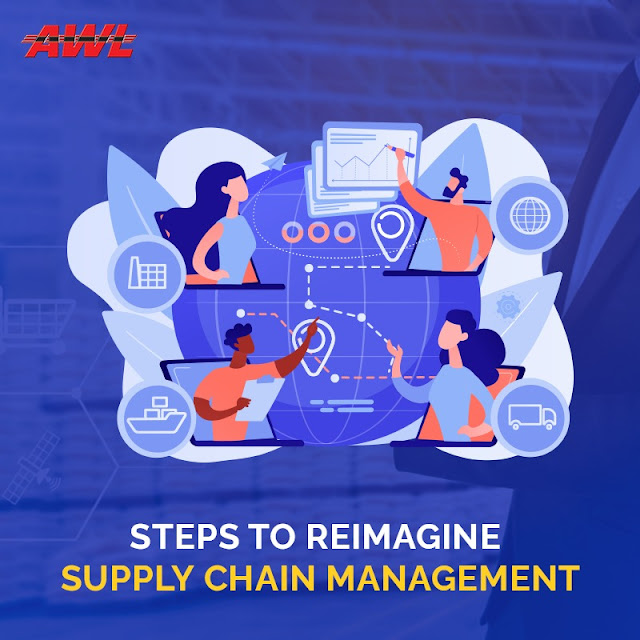India's Supply Chain and Logistics Reset
COVID-19 has undoubtedly impacted the global and domestic supply chains up to an extent where the logistics industry has undergone massive turmoil. The direct suspension of all the logistic activities due to enforced lockdown caused a whopping decrease of 6.1% in added gross value of the logistics industry.
Now that organizations and businesses across the globe grapple to counter the threatening concussions of the pandemic, the logistic industry has an exclusive opportunity to re-imagining supply chain management from scratch. Also, the role of supply chain and logistics consultancy in ensuring a smooth vaccination drive is of paramount importance and this increases the need for re-construction.
Over the years, logistics infrastructure has transformed immensely but the present model is no longer adequate to function efficiently in the current scenario. Although the logistic industry managed to survive the COVID-19 crisis and recovered sufficiently, enough to keep the basic economic requirements going. The need of the hour is to draft a new road-map and take the first few remedial steps to ensure a power-packed logistic infrastructure that can withstand similar disruptions while operating efficiently.
Steps to reimagine supply chain management
The pandemic disrupted the global supply chains and has precipitated an economic crisis led by a decrease in demand and services. As of now, to successfully navigate the intricacies of the immunization program, logistics companies are required to adopt a fresh and advanced model that can increase their supply chain capabilities.
As companies look forward to fixing and curtailing their supply chain risks in the long run, they need to recognize the rising opportunities and thus, establish a strong foundation for the supply chain management. Here are some steps to ensure the same:
Recreate the process of distribution
Organizations must start with taking a closer look into their distribution network and eliminating or replacing the weak distributors with the bigger ones. Placing the inventory of the finished product on a higher spot like within a factory or in distribution centers, in the distribution pipeline with the help of a flow-through model is another necessary step towards an enhanced infrastructure.
Lockdown has embraced the trend of home delivery and as a result, consumers even tend to pay delivery charges for availing the door-step delivery option. We can expect consumers to avoid socializing and going to crowded places post COVID-19, which will eventually deviate them from in-store shopping. Therefore, a huge shift is required to reconfigure the supply chain to endure the demands of consumers.
Increase Mechanisation
Mechanization of supply chains is inflexible in India mainly because of the comparatively low labor costs. However, COVID-19 has increased the need to diminish the density of workers across the logistic industry due to the strict social distancing policies. Therefore, organizations must adopt advanced technologies and automated internal processes, movement mechanization, pallet management services, and using AGVs.
Focus on risk mitigation
The prevailing upheaval caused by the pandemic requires organizations to upright resolve issues related to the supplier, distribution centers, or manufacturing sites that can cause supply chain failure and backup the multiple outgrowths of supply chain management instead of focusing on cost optimization.
Embrace risk and scenario planning
Most organizations fail to create a successful and strong strategy or call to action plan because they flunk to address the long-term forecast for their delivery agendas. Including substitute scenarios and risk planning in organizational strategy is one important step to focus on while reimagining the logistics infrastructure. The importance of risk planning to survive traumatic eventualities like pandemic can't be neglected; at least this is what the pandemic taught us.
Redesigning organizational structure
As strict lockdowns prevailed across the globe, companies had no choice but to shut down their workplaces and quickly adapt to the whole new remote work model. As employees started to work from their homes and managed organizational tasks and functions seamlessly through phone and video calls, remote working has emerged as a new work trend. Since most of the employees prefer this new experiment, there's no reason for organizations to go back to their traditional work model. Re-imagination of work by making your organization free of geographical barriers will help organizations grow boundlessly.
Prioritize digitization
Digitization is the key to run a smooth supply chain. By digitizing all the data and cash flows in the supply chain, organizations can ensure steady work processes. Further, companies must also focus on insisting their partners and suppliers embrace digital payments rather than cash payments.
Wrapping Up
This is how organizations can create a new and more effective working model for supply chain management. Letting a good opportunity go in vain is never a wise thing to do. Following the above-mentioned steps will help logistic consulting companies grow and gain clarity on how to create their future steps and strategies.
Source: https://www.awlindia.com/blog-india-supply-chain-and-logistics-reset




Comments
Post a Comment